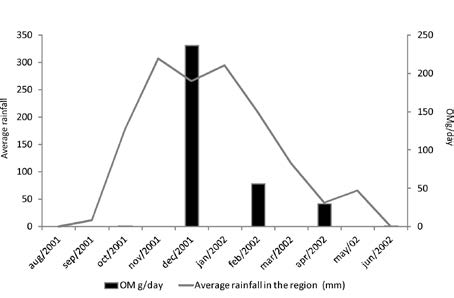Transport and consumption of organic detritus in a neotropical limestone cave
DOI:
https://doi.org/10.3986/ac.v41i1.54Ključne besede:
cave, detritus processing, energy flowPovzetek
Caves are permanently aphotic environments, a fact that precludes the occurrence of photosynthetic organisms. In these systems the resource is allochthonous, coming mainly from the surrounding epigean environment, being imported by physical and biological agents. Even knowing about the importance of the organic allochthonous resources in caves, little is known of their importation and processing. The present work had as an objective, the measuring the coarse particulate organic matter processing and import rates in the subterranean environment. The cave studied was Lapa da Fazenda Extrema I, limestone cave, located in Brazilian savanna biome. Through bimonthly collections, it was observed that the organic detritus penetrated into the cave in low amounts in dry season and high amounts in rainy season. The processing of the organic plant matter in the aquatic hypogean environment was moderate (K-day=0.025), in the epigean environment the processing was predominantly slow (K-day =0.0104). The detritus commonly brought to the interior of the cave were large woods (58.18 g/day), followed by leaves and fragmented material (12.76 g/day), fruits and seeds (0.0069 g/day), animal carcasses (0.002 g/day) and roots (0.001 g/day). The highest richness and abundances of invertebrates were found in the same periods in which there were the highest rates of organic matter import to the cave.
Keywords: cave, detritus processing, energy flow.
Prenosi

Prenosi
Objavljeno
Kako citirati
Številka
Rubrike
Licenca
Avtorji jamčijo, da je delo njihova avtorska stvaritev, da v njem niso kršene avtorske pravice tretjih oseb ali kake druge pravice. V primeru zahtevkov tretjih oseb se avtorji zavezujejo, da bodo varovali interese založnika ter da bodo povrnili morebitno škodo.
Podrobneje v rubriki: Prispevki




